|
~ Ernesto Che Guevara
~ Galéria
~ Oldal
~ Bejelentkezés
~ Vissza a Főoldalra
Ernesto Che Guevara, az argentin származású forradalmár, miniszter, gerillavezér és író, Buenos Aires-ben szerzett orvosi diplomát, majd a kubai forradalom során jelentős szerepet játszott a szigetország felszabadításában és újjáépítésében. A kubai gazdaság talpraállításáért dolgozott, küzdött az oktatás és az egészségügy fejlesztéséért, az írástudatlanság és a faji előítéletek felszámolásáért. Saját példájával népszerűsítette az önkéntes munkát. Kongóban és Bolíviában is harcolt - harminckilenc éves volt, amikor az amerikai-bolíviai csapatok csapdába ejtették és kivégezték.
| | |
|

| | |
|
|
|
1928 - 1948 From the birth to the university |
Aleida |
2013.10.11. 09:45 |
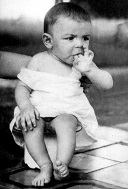
Ernesto Che Guevara is one of the most interesting and controversial personalities in the world history. He lived only 39 years, still he had and still had an enormous influence on so many countries and so many people. There are still books and films to be published about him and even fifty years after his death, he is still able to create violent emotions.
He is a true hero, a perfect example, the ideal of sincerity in the eyes of the South American peoples and for the people of those countries fighting for their independence - while he is only a cruel mass murderer for the American government and for those Cubans who live in the USA. Even though these charges have never been proved.
|
1948 - 1952 University and explorations |
Aleida |
2013.10.11. 09:45 |
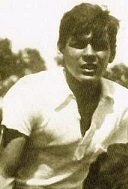
The Guevara family bought an old house on the corner of Calle Aráoz and Mansilla, and Ernesto received a job at the Buenos Aires City Council's Supplies Division. So besides studying at the university, he could work and support himself, and he also spent a lot of time on reading and writing his own philosophical dictionary in which he clarified his ideas and readings. His essays about Marx and Engels were published in 2007 (with the title A Biographical Synthesis of Marx and Engels).
Then he gave up his job and started his own business with an old friend of his, Carlos Figueroa in the garage of the Guevara home. They produced a kind of insecticide that was useful and a lot of housewives bought it. But soon they had to give it up because the whole house was smelling from it, and both Ernesto and his assistant were suffering from mild poisoning.
|
1952 - 1955 Crucial years |
Aleida |
2013.10.11. 09:47 |
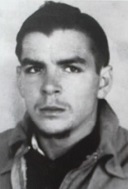
Ernesto graduated to make his promise to his mother come true but actually he didn't want to set up a practice or settle down - he wanted to travel around the world. He wanted to explore Latin America and also to visit Paris. By that time he spoke French fluently, thanks to his mother who had taught him, and he had devoured a huge amount of books from world literature to philosophy. He planned to make a new journey as soon as he finished his studies.
On 11th April 1953 Ernesto received his university degree. He phoned his mother and said: 'This is Doctor Guevara de la Serna speaking.' Then he went to see his friend, Calica and told him: 'Here you are, you fool. I was not going to graduate? Get ready, Calica. We are leaving soon.'
|
1956 - 1959 The Cuban Revolution |
Aleida |
2013.10.11. 09:48 |

[The USA kept the South American countries under its oppression, exploited them, while its puppets were sitting in the government as prime ministers.
Cuba was discovered by Christopher Columbus, the Spanish empire was exploiting the country for long centuries, carrying its treasures away, bringing African slaves to work on the sugarcane fields and to do the hard work of making sugar – the Cuban sugar has always been famous for its great quality. Later the Cubans fought for their freedom and got rid of the Spaniards, but then the USA came to continue the exploitation of the small island. Their puppet, the Cuban sergeant Fulgencio Batista was ruling, making a luxury brothel out of Havana, full of prostitutes, casinos and night clubs, where rich American businessmen and Hollywood stars came to have a good time – while most of the Cubans were tortured by hunger, living in poverty.]
Ernesto continued to carrying out his research on allergy, while reading passionately and watching Fidel Castro preparing for their invasion of Cuba. He was obtaining weapons, while getting money from the Cubans living in the USA.
On 15th February 1959 Hilda Beatriz Guevara was born. (Beatriz Guevara-Lynch was Ernesto's favourite aunt.) She was nicknamed Hildita.
|
1959 - First year of the Revolution |
Aleida |
2013.10.11. 09:49 |
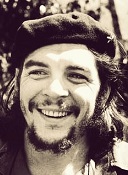
On1st January Fulgencio Batista celebrated the new year with a big party at Camp Columbia Barracks. At dawn he heard that Che and his rebel column captured Santa Clara - then he went to the airport with his family and most of his fortune (approximately $300 million) and left Cuba for good. He died in Portugal in 1973.
Everyone, connected to Batista (friends, bodyguards, military men) decided to leave the country or stay in Cuba but change their names.
Che's victory made other people flee as well - like Meyer Lansky and his friends who owned brothels and casinos in Havana, making a big fortune by selling drug, prostitutes and an opportunity for gambling for the American rich and famous.
On 2nd January Che left for Havana and on the next day he arrived and captured the fortress of La Cabaña (that Batista used as a military prison). During the journey, when they stopped for a short break, Che told Aleida that he loved her. She was so surprised that she couldn't reply.
|
1960 - 1961 Minister and diplomat |
Aleida |
2013.11.05. 10:43 |
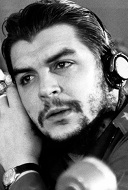
While Cuba was reorganising its internal affairs, a huge amount of people were leaving for the USA. The exiles were either Batista's supporters or such people who disliked the Cuban revolution turning into a socialist/communist direction. They created a powerful anti-Castro lobby demanding a more strict embargo against Cuba. The US government encouraged the emigration by providing special programmes to help Cubans settle and it also took advantage of the anti-Castro lobby.
Between 1960 and 1962 about 200,000 people left Cuba for good - mainly members of the social and economic elite - which created brain drain. Finding new professionals, managers and executives were rather hard because they had to be ideologically trustworthy as well.
Che, president of the National Bank and Minister of Industry (appointed on 23rd February), had to keep the economy going with such a huge blow.
|
1962 - Constant fight with the USA |
Aleida |
2013.11.05. 10:48 |
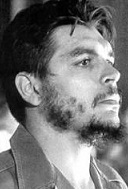
As a reply to Cuba's suspension from the Organization of the American States on 31st January, Fidel Castro issued the Second Declaration of Havana on 4th February, underlining Cuba's support for revolutionary struggle throughout the Americas. Castro became the guerrillas' champion and inspiration all over the world, while Cuba gave financial assistance, weapons and training to the Latin American guerrilla movements. Che's Guerrilla Warfare became a really popular book.
In March Cuba hosted an international chess tournament and Che took time off to watch the matches and to even play a few games. He played the Argentine Grandmaster Miguel Najdorf and the match ended in a stalemate.
|
1963 - 1964 Speeches and secret plans |
Aleida |
2013.11.05. 10:50 |
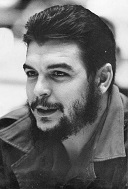
In 1963 Khrushchev was trying to do everything to keep Cuba on the side of the USSR - especially when he realised how disillusioned Che Guevara became with the Soviets (actually Che's feelings had started before the missile crisis).
Che found the Soviets too bureaucratic, he felt that they were indulging in a state of capitalism, and he disapproved of the privileges the Soviet leaders awarded themselves. He was also disappointed with the quality of some machinery and tools, sent from the USSR to Cuba to replace the American ones (that became rusty or useless since the Revolution). However, he didn't approve of everything that Mao Tse-tung said or did - by then he developed his own Marxism which he expressed in his writings and speeches.
His vision of the New Man was different from the New Man of Marx, Lenin or Mao.
|
1965 - 1966 Adventures in the Congo |
Aleida |
2013.11.05. 10:51 |
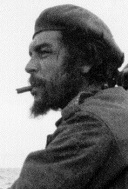
The purpose of Che's visits to African heads of state was to consolidate Cuba's relationships with the newly freed nations.
On 29th January 1965 Che was in Algeria and he gave an interview for the newspaper Argel Ce Soir: "Africa is sick; now it is convalescent and it is getting better. Its sickness was colonialism, its risk of relapse is neo-colonialism."
Then he flew to Paris for a day. He visited the Louvre and sent Aleida a postcard of Lucrezia Crivelli's portrait (by Leonardo da Vinci) claiming that his wife looked like the lady in the painting. The next day he travelled to Tanzania for a five-day official visit, then he visited Cairo, Algeria and Peking. He expressed his wish to learn more about planning, organisation and management of the Chinese economic project. He also believed that China should be invited to join the United Nations and he spoke about it at international forums.
|
1966 - 1967 Adventures in Bolivia |
Aleida |
2013.11.05. 10:52 |

From Tanzania Che left for Prague where he spent several weeks. Aleida followed him - again in disguise (in a long black wig and thick glasses) and with a false passport in the name of Josefina González.
Che wanted to go to Bolivia immediately (where Tania and José María Martínez-Tamayo had already been waiting for him) but Fidel Castro managed to persuade him to return to Cuba where he could choose and train the men he would take to Bolivia with him.
In late July Che arrived back at Cuba, that time when many people came to join the 26th July celebrations. He had no hair but a hunched back and thick glasses so nobody could recognise him in the crowd. He was never seen in public again.
He went to Pinar del Río, to the San Andrés de Caiguanabo camp where a group of men were already in training for the Bolivian campaign. Most of them were veterans who had served under him and who volunteered for the expedition.
|
8 October 1967. Día del Guerrillero Heroico |
Aleida |
2013.11.05. 10:53 |
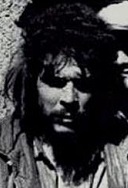
On 8th October 1967 the remaining seventeen guerrillas, tortured by diseases and hunger, were trapped in a brushy gully called Quebrada del Churo by the Bolivian forces and their only chance of escape was a breakout.
A local peasant alerted the Bolivian army, led by Gary Prado Salmon, who quickly detected the guerrillas.
The battle began at 1 p.m. Some guerrillas were killed, others were captured - including Che, dressed into dirty rags, almost barefoot, with unkempt hair and beard. He was seriously wounded on his left leg in the skirmish, and his M-2 carbine was destroyed by an enemy bullet. Willy (his real name was Simón Cuba), who was fighting by his side, was also captured.
|
9 October 1967. Che Guevara's death |
Aleida |
2013.11.05. 10:54 |
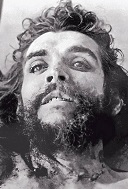
On 9th of October 1967 the Bolivian president, René Barrientos gave the order to execute Che Guevara - although the American government wanted him to stay alive and be taken to Panama for further interrogation and even American helicopters were on stand-by to evacuate Che.
The order arrived at La Higuera at 12:30.
Willy was killed, then Felix Rodriguez took Che out of the school building where the last photographs of Che were taken. Then Rodriguez took Che back - while the other guerrillas were being shot nearby.
According to Rodriguez, Che suspected that he would be killed soon and when he was told about the command, he faced death with grace and courage.
|
Timeline |
Aleida |
2013.11.05. 10:58 |
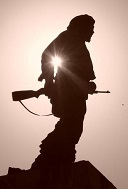
[Che Guevara's life in photographs from his birth to his death]
|
| | |
|
|
|
~ Ernesto Che Guevara
~ Gallery
~ Site
~ Log in
~ Back to the Main page
Ernesto Che Guevara, the Argentine-born revolutionary, minister, guerrilla leader and writer, received his medical degree in Buenos Aires, then played an essential part in the Cuban Revolution in liberating and rebuilding the country. He did his best to set up the Cuban economy, fought for the improvement of the education and the health system, the elimination of illiteracy and racial prejudice. He promoted voluntary work by his own example. He fought in the Congo and in Bolivia - he was thirty-nine years old, when he was trapped and executed by the joint American-Bolivian forces.
| | |
|
|

